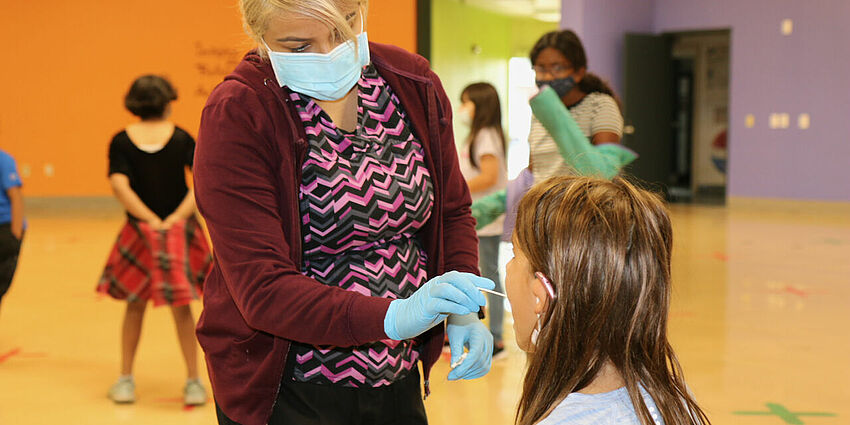COVID-19 Testing Program Earns National Attention
Partnership results in more learning, fewer outbreaks

The success of the school-based COVID-19 testing program in Campbell Union School District (CUSD) has caught the attention of the American Association of School Administrators (AASA). Our superintendent and leaders from Grapefruit Testing presented the program, now called Test-to-Stay, to several AASA members in a Dec. 8 webinar.
Launched in September 2021, CUSD was the first school district west of the Mississippi to create a partnership with this robust medical team to provide frequent and rapid school-day COVID-19 testing of students on campus and in the community.
“Our students were returning to full-day, in-person instruction,” said District Superintendent Shelly Viramontez. “We wanted to partner with experienced medical experts to set up a testing process that would assure families that their students and classmates would be monitored for exposure to COVID while freeing our teachers and staff to focus on instruction.”
The district chose to partner with Grapefruit Testing to create a program that quickly identifies students and other individuals who need to quarantine so that everyone else can safely return to their daily tasks. The provision for modified quarantine testing allowed students who were a close contact and asymptomatic to stay in school with the timely testing process. The rapid response testing team in our district ensures that those students are tested on the required days, quickly confirming if they are COVID-free and making it possible for them to participate in school.
It was a struggle in the beginning, working through the logistics for scheduling and testing thousands of preschool through eighth grade students, some of whom are still learning to speak English. The team debriefed frequently to identify needs and modifications, including the addition of a third partner, Predicine, to smooth out the rough spots of on-site testing. Adding grant-funded trackers and tracers relieved an additional burden from district staff and improved notifications to parents.
In just a few months, the program now operates well and allows faculty, staff, and principals to focus on students’ educational needs while medical experts manage the health-related tasks.
“Our students missed out on so much learning and socialization during school closures,” Viramontez said. “Developing a seamless system that takes minimal time away from instruction while ensuring students are safely attending school is essential. When we consider learning acceleration strategies, keeping students in school and learning is our best strategy.”

